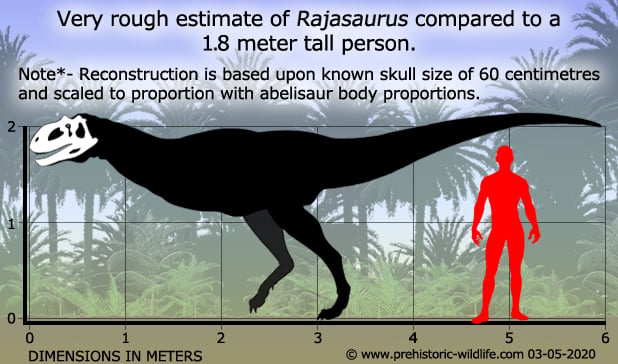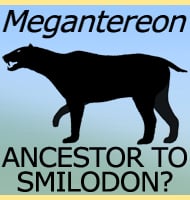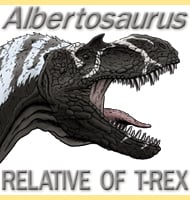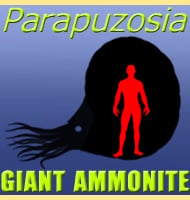In Depth
Although officially named in 2003, the first confirmed remains of Rajasaurus were found in between 1982 and 1984 by Suresh Srivastava. However there is an outside chance that the first remains may have actually been discovered way back in 1923 with the naming of Lametasaurus. Lametasaurus though is now considered to ba a paleontological chimera and what this means is that the remains of several different dinosaurs were incorrectly interpreted as belonging to the same dinosaur.
Rajasaurus is a carnotaurine abelisaur, and as such it is thought to be related to other late Cretaceous forms like Carnotaurus and Majungasaurus, the latter genus being thought to be a particularly close relative. Majungasaurus is known only from Madagascar and twenty million years before the Rajasaurus holotype specimen died, Madagascar was actually part of India. Because both Majungasaurus and Rajasaurus are both from the Later stages of the Cretaceous and both were isolated from one another, they must have had a common ancestor active twenty million years earlier when India and Madagascar were still joined.
Rajasaurus seems to have had a low rounded horn that grew from the nasal bones of the skull, a similar feature also appearing on the skull of Majungasaurus. This is interesting since the tyrannosaurs that were the dominant theropods in the northern continents steadily lost ornamental structures on their heads as they became more advanced. In contrast to them the ornamentation of Rajasaurus combined with the double horns of Carnotaurus suggests that the abelisaurs seem to have developed head ornamentation as they grew more advanced. Another Indian abelisaur named Indosaurus is also thought to have possibly had a pair of horns above its eyes, although this remains difficult to prove since the holotype specimen has been lost.
Further Reading
– A new abelisaurid (Dinosauria, Theropoda) from the Lameta Formation (Cretaceous, Maastrichtian) of India – J. A. Wilson, P. C. Sereno, S. Srivastava, D. K. Bhatt, A. Khosla & A. Sahni – 2003.










